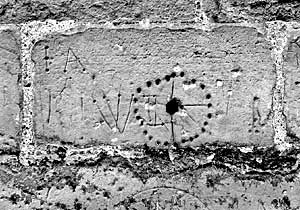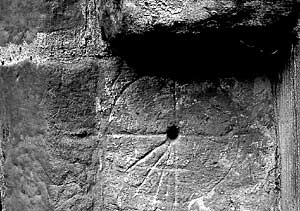Thoroton Society Research Group
Report of meeting held on 28 September 2013
The Research Group met on Saturday, 28 September 2013 in the Boardroom of the Nottingham Mechanics.
Ted White gave an account of the Boots Company magazine Comrades in Khaki which was published between 1915 and 1916. Some twelve issues were published and sold at 2d per copy to raise money for the Sick and Wounded Fund. By 1918 the fund had raised £13,000, much of it from the 2d sales.
The magazine was a line of communication between Boots and members of their staff who were serving in the Forces. All issues included the Boots Roll of Honour - not a list of those killed but a list of staff members who had volunteered. The frst issue had 1,000 names beginning with that of Lt. J. C. Boot, Jesse Boot’s only son, who was an offcer in the Sherwood Foresters.
One of the purposes of the magazine was to print letters from those serving. These included Letters from the Lads on the Western Front; Epistles from the East - mainly Gallipoli; and Ashore and Afoat from those in the Navy.
There were some poems, some rather terrible, such as one ending:-The fower of Britain’s brave recruits Yes, these are the lads from Boots
The care of the wounded at the Front by Boots’ dispensers in the Royal Army Medical Corps was highlighted, with pictures showing Boots’ staff in a dispensary.
Sadly there were many obituaries, some quite lavish, with photographs and biographies of those who had been killed.
Overall, the magazine showed the extent of the support that Boots provided, both for those members of staff serving in the forces and for their families at home.
Few copies of Comrades in Khaki have survived, although there is a set in the Boots archive and some in the University of Nottingham’s Department of Manuscripts and Special Collections.
 Mass dial at St. Swithun’s Church, Woodborough
Mass dial at St. Swithun’s Church, WoodboroughPhoto: John Wilson.

Mass dial at Holy Trinity Church, Lambley
Photo: John Wilson.
John Wilson described church mass dials, also sometimes called scratch dials. These are small sundials, carved or scratched onto the south walls of medieval churches. It is thought that they might have been used by priests to determine the time of mass or other services. Some are very crude, whilst others seem to have been expertly carved. Each mass dial has a central hole for a pointer or gnomon which lies horizontally and casts a shadow onto the lower part of the dial. Most such dials have either a series of radial lines, or a series of holes, which could be used to show the time. Many of the mass dials are very badly eroded by weathering, and it is possible that those on some churches may have simply disappeared altogether.
Re-building work at Holy Trinity Church, Lambley, some ten years ago, resulted in the discovery of a well-preserved mass dial behind some old stonework. The Lambley dial has three radial lines. John described an ongoing study he is carrying out using a model of a mass dial, to see what clock times are indicated by the three lines on different dates throughout the year.
Some fifty-three medieval churches in Nottinghamshire are known to have mass dials. However, no systematic survey of the county has been carried out. John suggested that members of the Society might be encouraged to visit churches in the county, or to report from churches that they know well, to see which have extant mass dials and which do not.
There is to be a joint Day School involving the Thoroton Society and Nottinghamshire Local History Association, on Saturday, 25 October 2014, on the subject of The Home Front in World War 1. The next meeting of the Research Group would involve a trial run of presentations for this Day School.
The next meeting of the Group will be held at 10.30 a.m. on Saturday, 3 May 2014 in the Boardroom of the Nottingham Mechanics.
< Previous